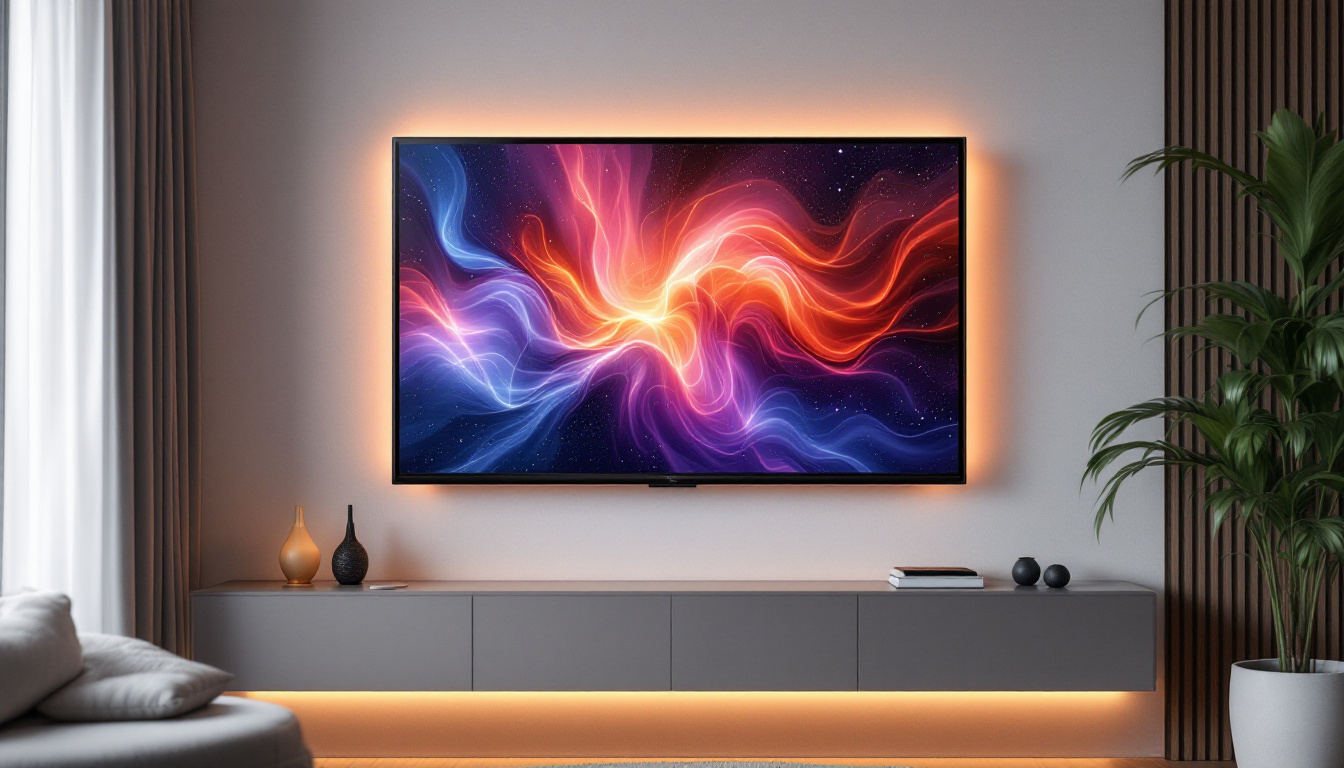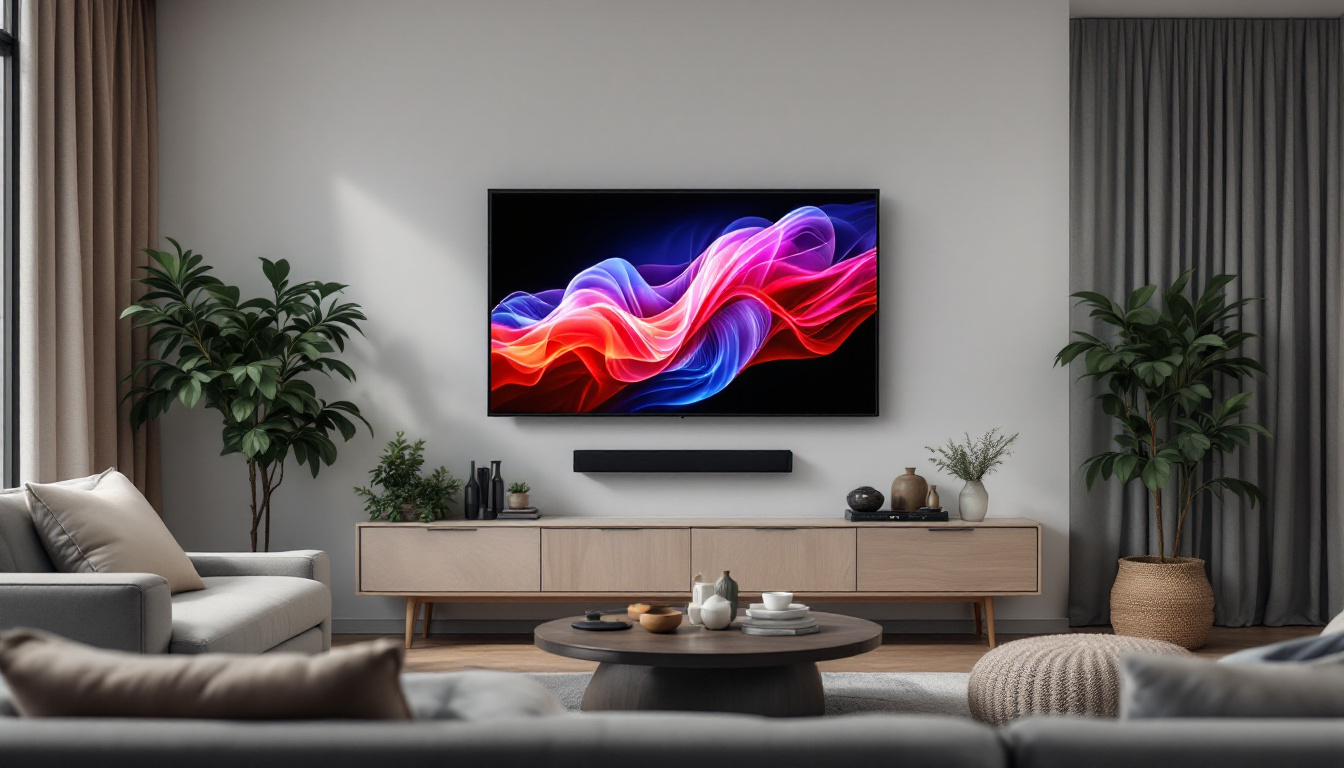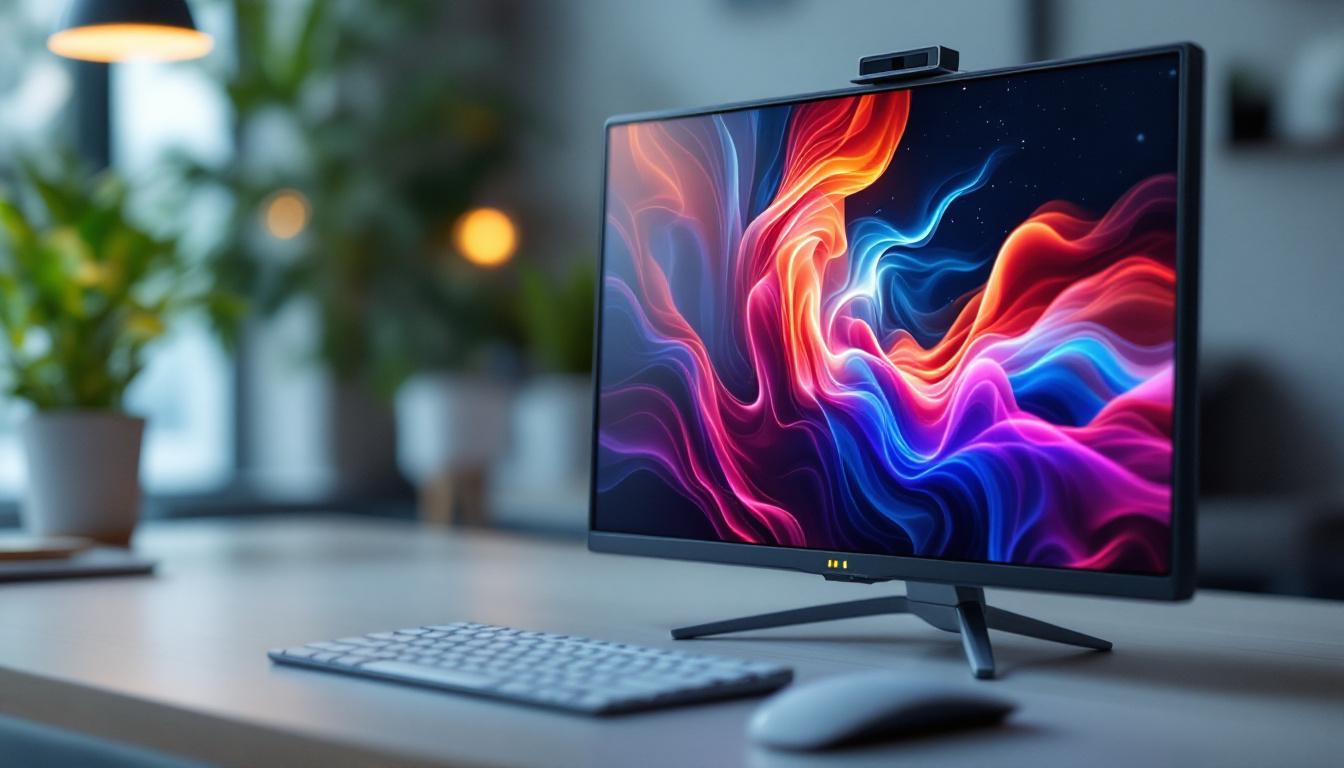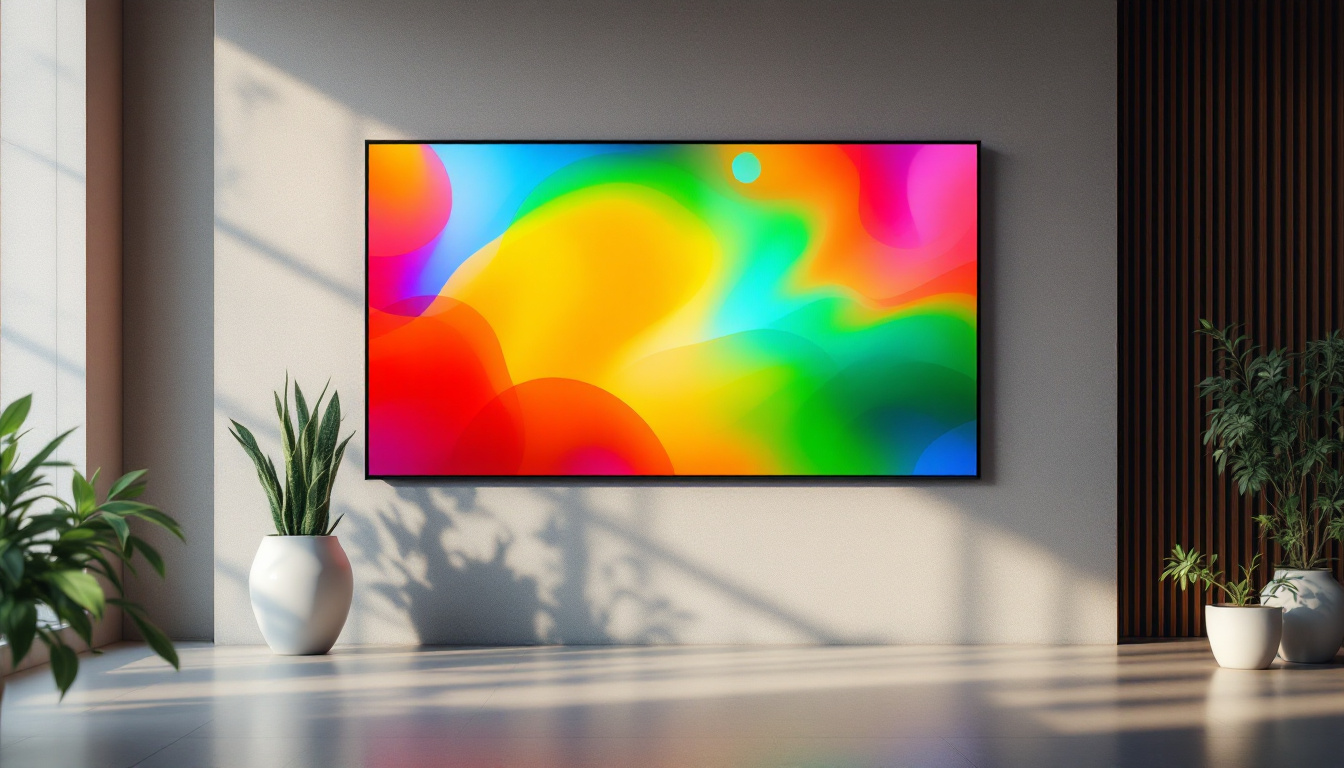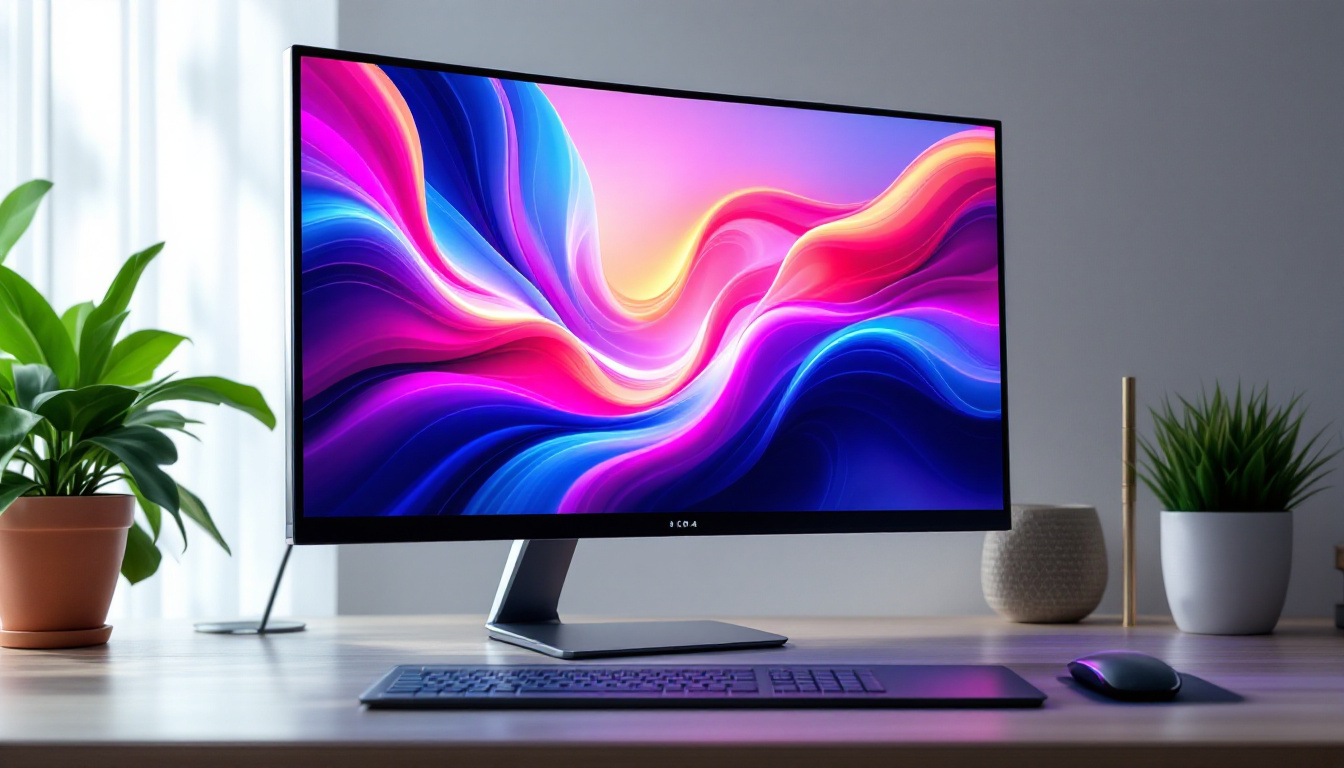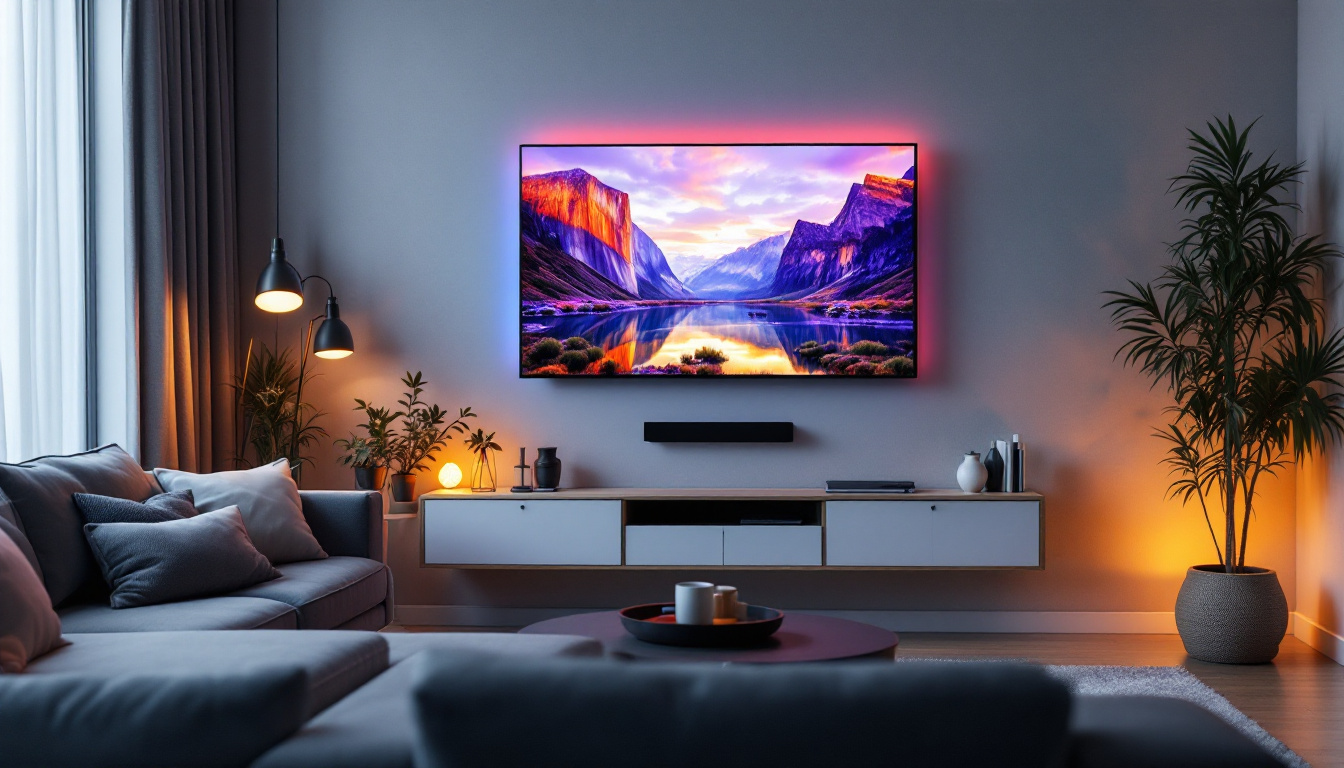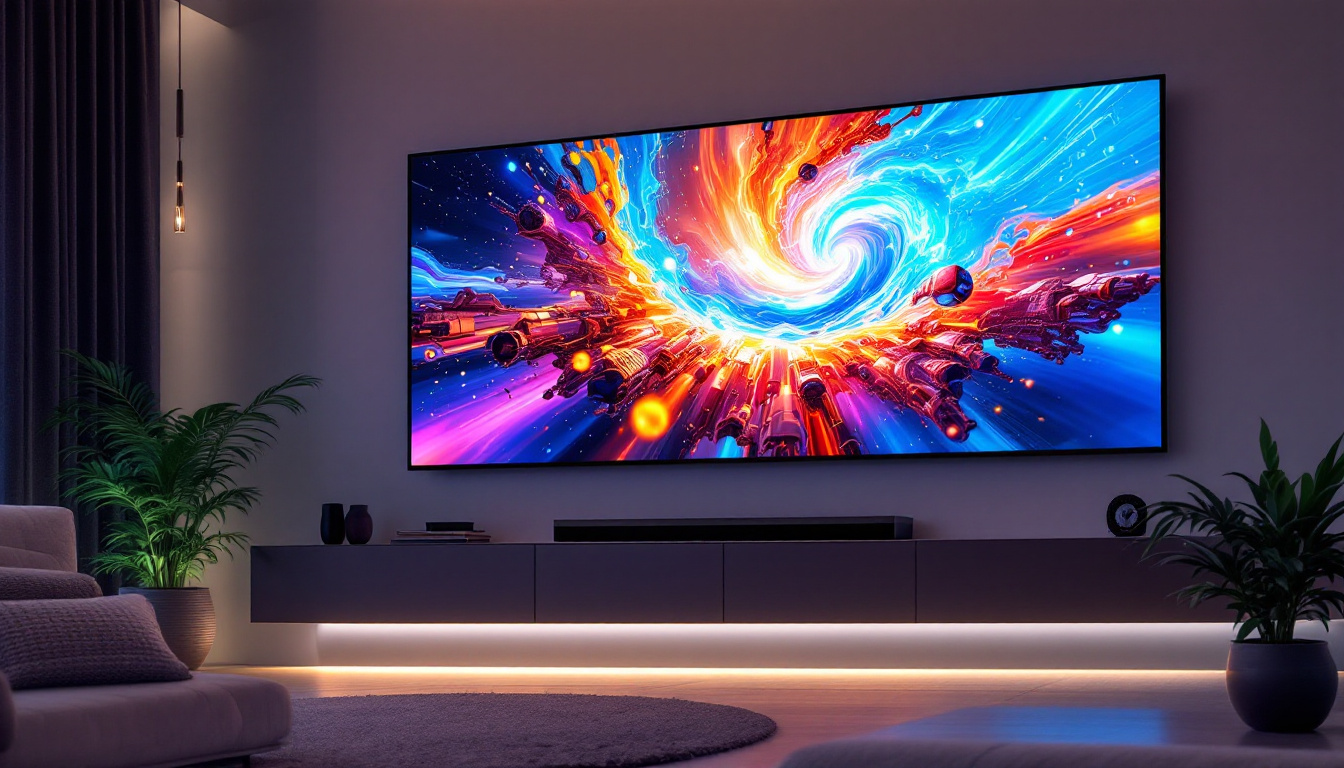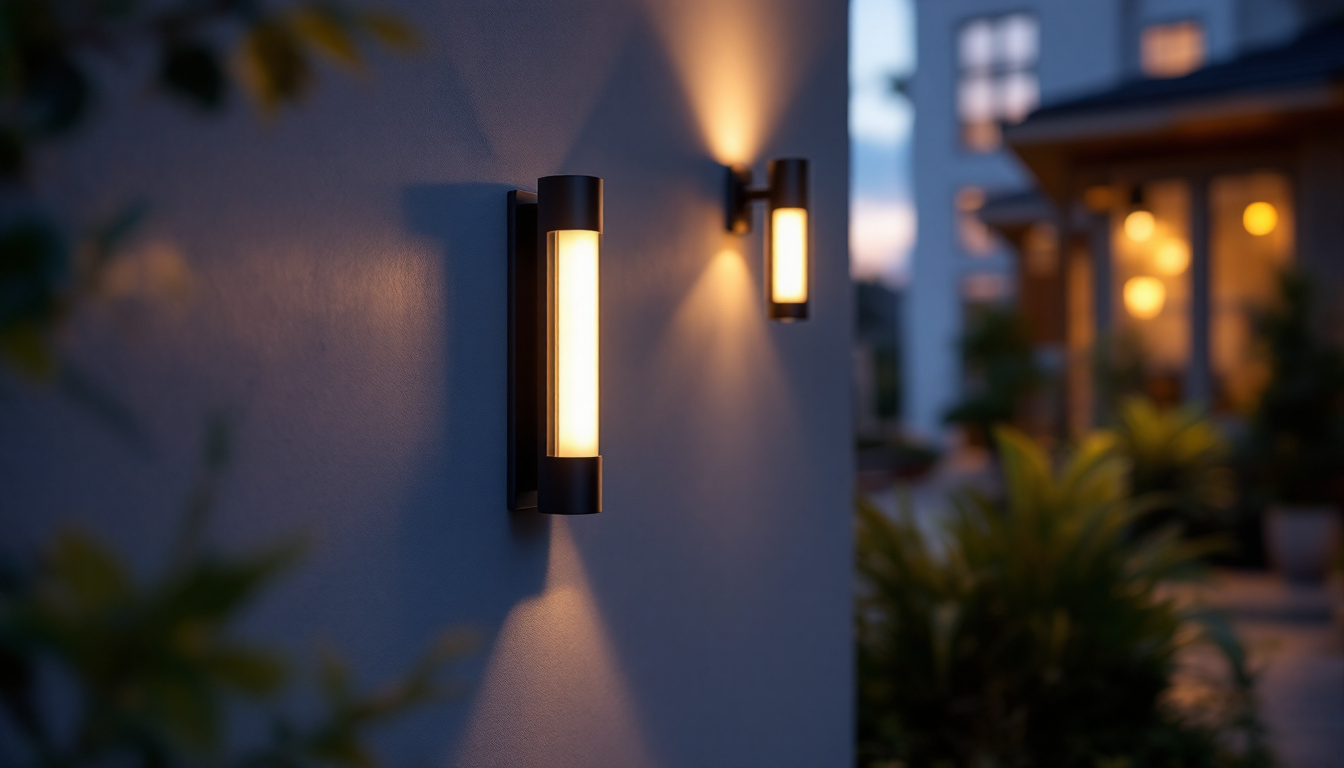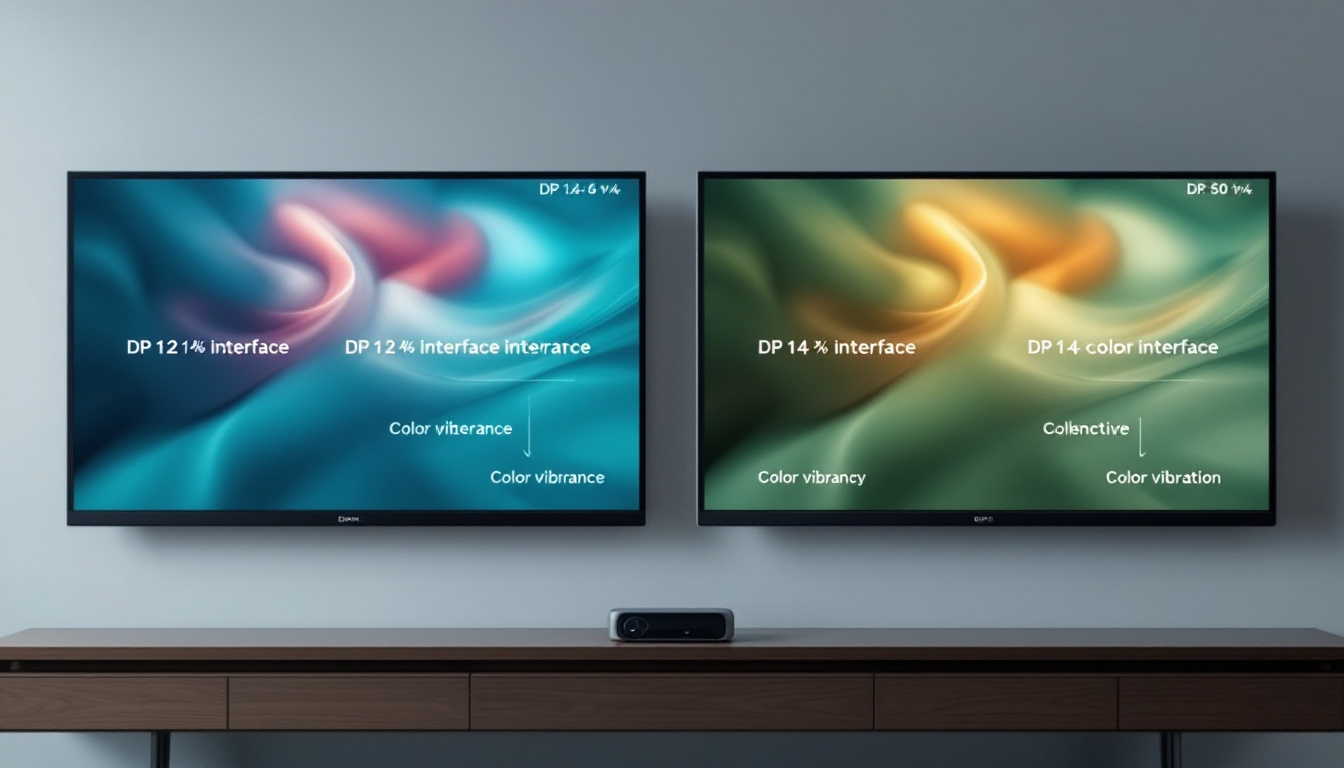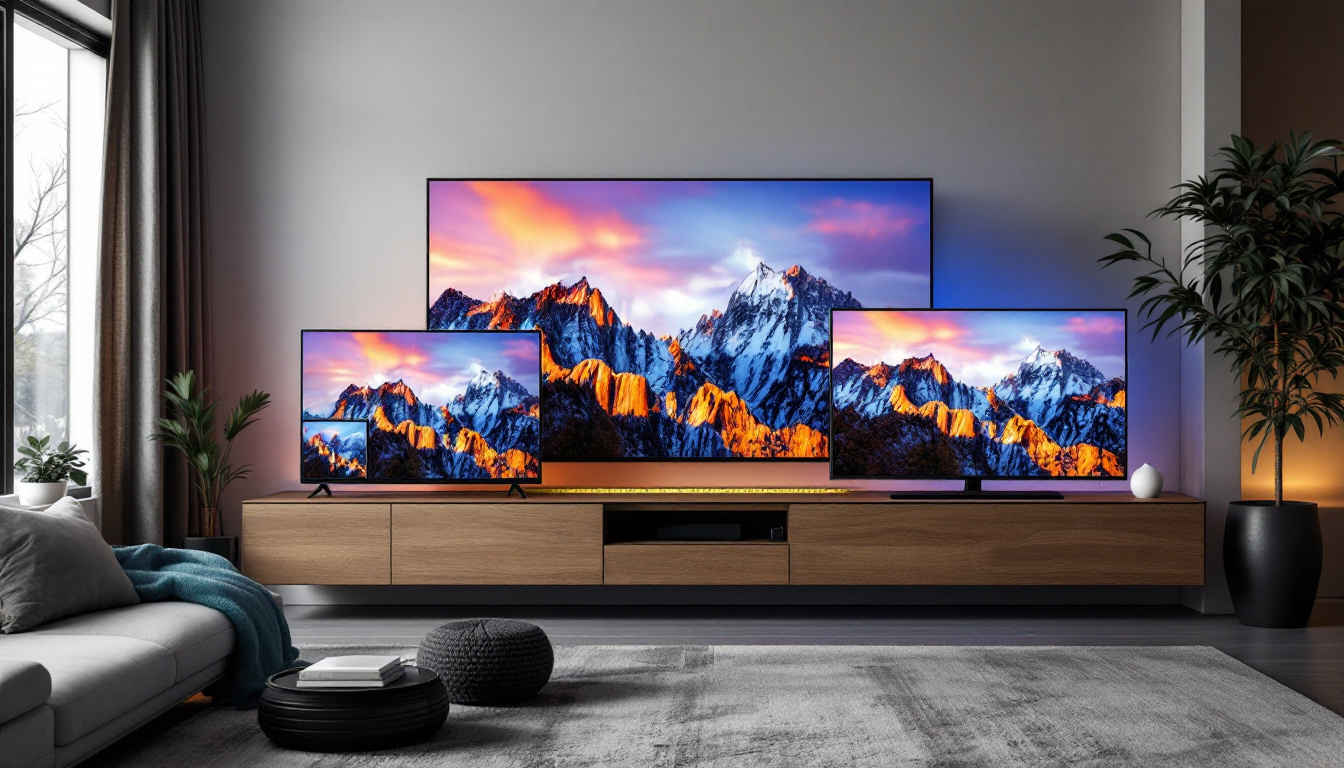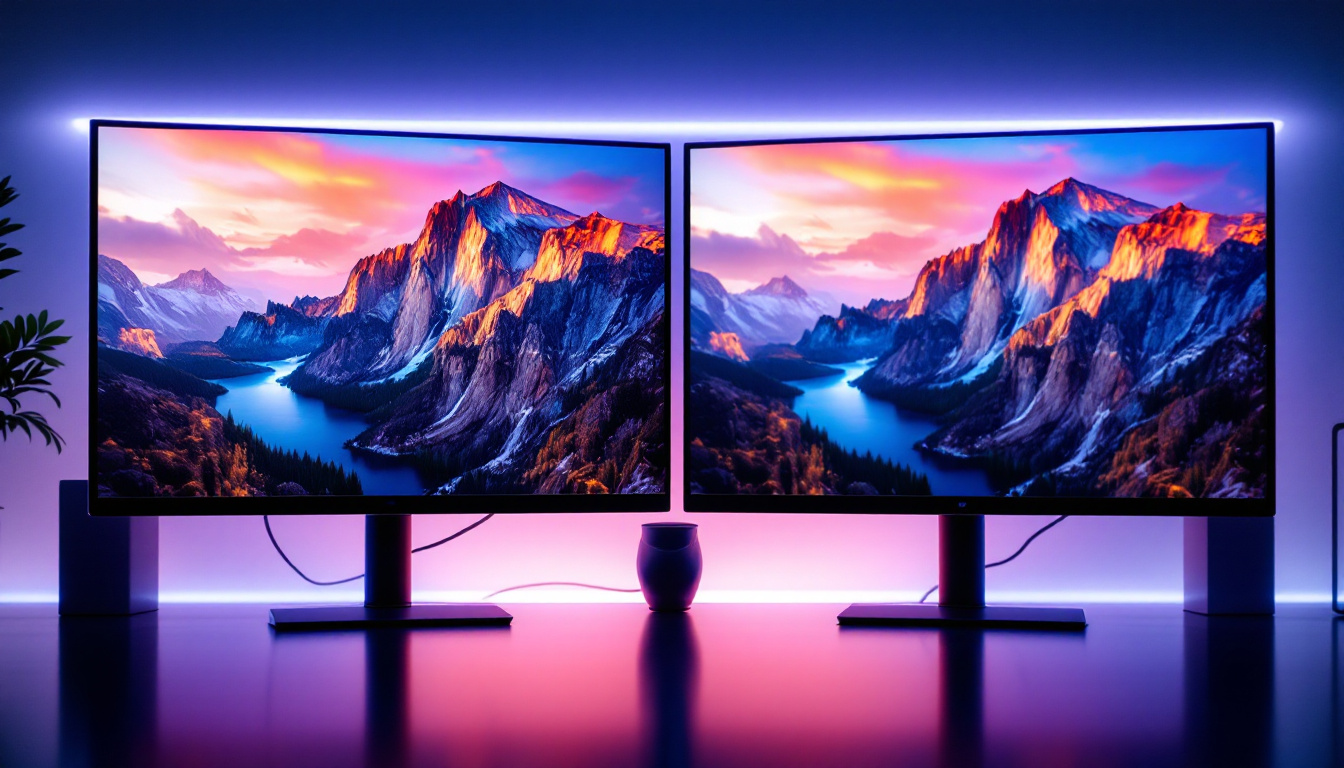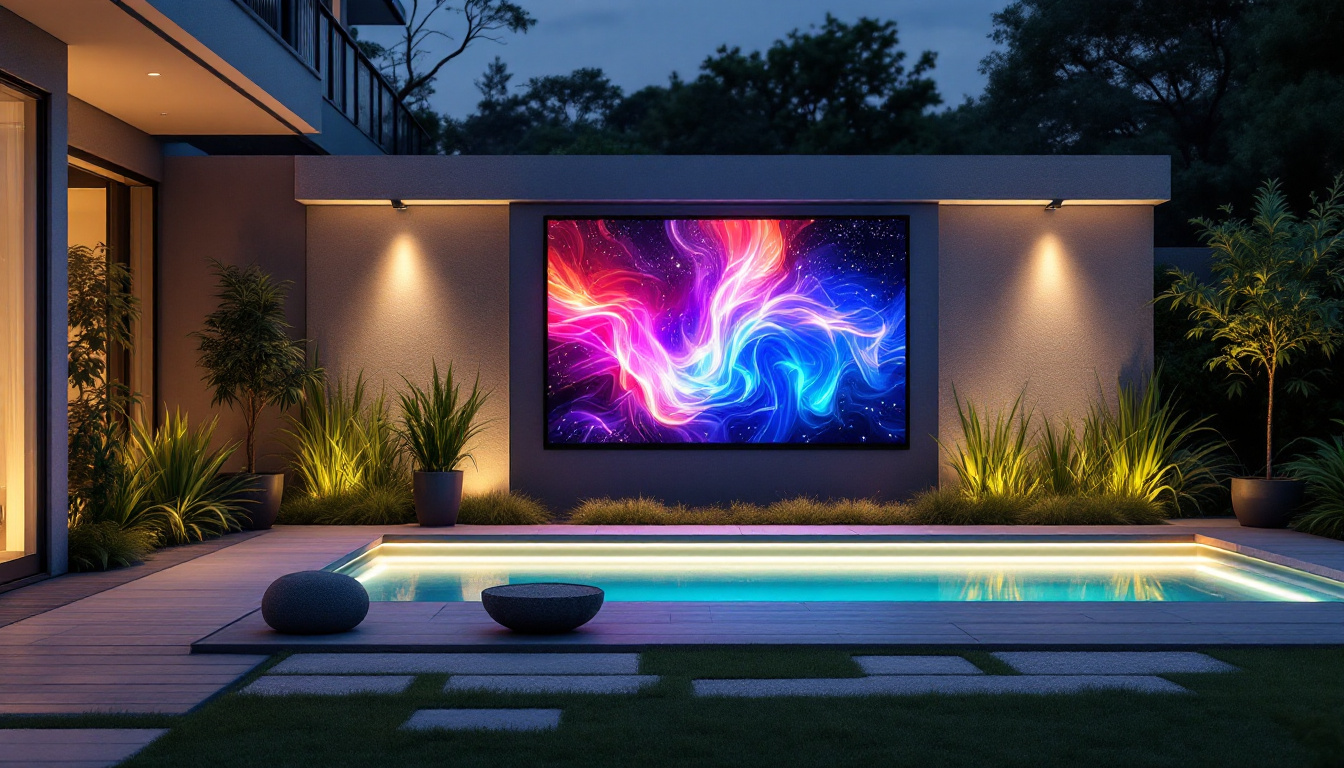Thin Wall TV: LED Display Explained
The evolution of television technology has dramatically changed the way viewers experience visual content. Among the most significant advancements is the development of thin wall TVs, particularly those utilizing LED (Light Emitting Diode) display technology. This article delves into the intricacies of LED displays, their advantages, and how they have transformed the landscape of home entertainment.
Understanding LED Technology
LED technology has become a cornerstone in modern television design. Unlike traditional cathode ray tube (CRT) televisions, which are bulky and heavy, LED TVs are sleek and lightweight, making them ideal for wall mounting. But what exactly is LED technology, and how does it work?
What is LED?
LED stands for Light Emitting Diode, a semiconductor device that emits light when an electric current passes through it. In the context of televisions, LEDs are used to illuminate the screen. This technology allows for brighter images, better color accuracy, and improved energy efficiency compared to older display technologies.
LEDs can be arranged in various configurations, such as edge-lit or backlit. Edge-lit LEDs are positioned around the perimeter of the screen, while backlit LEDs are placed directly behind the display. Each configuration has its own benefits and drawbacks, impacting the overall picture quality and viewing experience. For instance, edge-lit displays are generally thinner and lighter, making them easier to handle and install, but they may suffer from uneven brightness across the screen. In contrast, backlit displays, while bulkier, can provide more uniform brightness and deeper contrast ratios, enhancing the viewing experience, especially in darker environments.
Types of LED Displays
There are primarily two types of LED displays: standard LED and OLED (Organic Light Emitting Diode). Standard LED TVs use liquid crystal display (LCD) technology combined with LED backlighting. On the other hand, OLED TVs utilize organic compounds that emit light when an electric current is applied, allowing for deeper blacks and more vibrant colors.
While both types offer excellent picture quality, OLED displays tend to be more expensive due to their advanced technology and superior performance. However, standard LED TVs are widely popular for their affordability and solid performance, making them a common choice for many households. Additionally, the rapid advancement in LED technology has led to the development of QLED (Quantum Dot LED) displays, which enhance color accuracy and brightness by using quantum dots in conjunction with LED backlighting. This innovation has further blurred the lines between standard LED and OLED, providing consumers with even more options tailored to their viewing preferences and budget.
Advantages of Thin Wall TVs
Thin wall TVs have gained immense popularity for several reasons. Their sleek design and advanced technology provide numerous benefits that enhance the viewing experience. Below are some of the key advantages of thin wall TVs with LED displays.
Space-Saving Design
One of the most significant benefits of thin wall TVs is their space-saving design. With the ability to mount these televisions directly on the wall, they free up valuable floor space, making them ideal for smaller living areas. This minimalist approach not only enhances the aesthetics of a room but also allows for more flexible furniture arrangements.
Moreover, the slim profile of these TVs means they can fit seamlessly into any decor style, whether modern, traditional, or eclectic. Homeowners can choose from various mounting options, including fixed, tilting, or full-motion mounts, to achieve the desired viewing angle and position. This versatility extends beyond just aesthetics; it also allows for optimal viewing comfort, reducing neck strain and enhancing the overall enjoyment of your favorite shows and movies.
Enhanced Picture Quality
Thin wall TVs equipped with LED technology offer remarkable picture quality. The brightness and contrast levels provided by LED displays result in vibrant colors and sharp images. This is particularly noticeable in well-lit rooms, where traditional displays may struggle to maintain clarity.
Additionally, many LED TVs come with advanced features such as HDR (High Dynamic Range) support, which enhances the contrast between the brightest and darkest parts of the image. This technology allows for a more lifelike viewing experience, making movies and shows more immersive than ever before. Coupled with features like local dimming, which adjusts the brightness of specific areas of the screen, viewers can enjoy a cinematic experience right in their living rooms, with deep blacks and brilliant highlights that draw them into the action.
Energy Efficiency
Another advantage of thin wall TVs is their energy efficiency. LED technology consumes significantly less power than traditional display technologies, resulting in lower electricity bills. This eco-friendly aspect is increasingly important to consumers who are conscious of their environmental impact.
Furthermore, many manufacturers are now producing energy-efficient models that are ENERGY STAR certified. These models not only reduce energy consumption but also contribute to a more sustainable lifestyle. In addition to saving on energy costs, these TVs often come with features that allow users to monitor their energy usage, providing insights into how much power is consumed during viewing. This level of awareness can encourage more responsible viewing habits, making it easier for consumers to balance their entertainment needs with their commitment to energy conservation.
Installation and Setup
Installing a thin wall TV may seem daunting, but with the right tools and guidance, it can be a straightforward process. Proper installation is crucial for ensuring optimal viewing angles and safety. Below are some key considerations when setting up a thin wall TV.
Choosing the Right Mount
Selecting the appropriate mount is essential for a successful installation. There are various types of mounts available, including fixed, tilting, and full-motion mounts. Fixed mounts keep the TV flat against the wall, while tilting mounts allow for slight adjustments to reduce glare. Full-motion mounts offer the most flexibility, enabling viewers to swivel and extend the TV for the best viewing angle.
When choosing a mount, it is vital to consider the size and weight of the TV, as well as the wall type. Ensure that the mount is compatible with the TV’s VESA (Video Electronics Standards Association) mounting pattern, which specifies the distance between the mounting holes on the back of the TV.
Wall Considerations
Before installation, assess the wall where the TV will be mounted. Ensure that it can support the weight of the TV and the mount. For drywall, it is advisable to locate the studs for secure anchoring. If mounting on concrete or brick, specialized anchors may be required.
Additionally, consider cable management. Hiding cables can enhance the overall look of the installation. Many mounts come with cable management systems, or homeowners can use cable covers to achieve a clean appearance.
Maintenance and Care
To ensure the longevity of a thin wall TV, proper maintenance and care are essential. Regular cleaning and mindful usage can prevent common issues and keep the TV performing at its best.
Cleaning the Screen
Cleaning the screen of a thin wall TV requires caution. It is best to use a microfiber cloth and a cleaning solution specifically designed for electronics. Avoid using paper towels or abrasive materials, as they can scratch the screen.
Before cleaning, it is advisable to turn off the TV and unplug it. This not only ensures safety but also allows for better visibility of dust and smudges. Gently wipe the screen in circular motions to remove any debris without applying excessive pressure.
Software Updates
Many modern thin wall TVs come with smart features that require regular software updates. These updates can improve performance, add new features, and enhance security. It is important to check for updates periodically and install them as needed to ensure the TV operates smoothly.
Most TVs will notify users when an update is available, but it can also be done manually through the settings menu. Keeping the software up to date ensures that the TV remains compatible with the latest streaming services and applications.
Future of Thin Wall TVs
The future of thin wall TVs appears bright, with ongoing advancements in display technology and design. As consumer preferences evolve, manufacturers are continually innovating to meet the demands for better picture quality, smarter features, and more sustainable options.
Emerging Technologies
One of the most exciting developments in the realm of thin wall TVs is the potential for MicroLED technology. This technology utilizes microscopic LEDs to create self-emissive displays, offering even greater brightness, contrast, and color accuracy than current LED and OLED technologies. MicroLED displays are expected to be thinner, lighter, and more energy-efficient, further pushing the boundaries of what is possible in television design.
Additionally, advancements in AI and machine learning are making their way into smart TVs. These technologies can enhance user experience by providing personalized content recommendations, optimizing picture settings based on viewing conditions, and even improving sound quality through adaptive audio features.
Integration with Smart Home Systems
As smart home technology continues to gain traction, the integration of thin wall TVs with home automation systems is becoming increasingly common. Future models may feature enhanced connectivity options, allowing users to control their TVs with voice commands or through mobile applications.
This seamless integration will enable users to create a more cohesive smart home experience, where the TV can interact with other devices, such as lighting and security systems, to enhance daily living.
Conclusion
Thin wall TVs with LED displays represent a significant advancement in television technology, offering a combination of sleek design, superior picture quality, and energy efficiency. As technology continues to evolve, these TVs are set to become even more integral to the home entertainment experience.
Understanding the features, benefits, and maintenance of thin wall TVs can empower consumers to make informed decisions when selecting their next television. With the right setup and care, a thin wall TV can provide years of enjoyment, transforming the way viewers engage with their favorite content.
Explore the Future of Visual Experience with LumenMatrix
Ready to elevate your home entertainment with the latest in LED display technology? Discover LumenMatrix’s innovative solutions, from Indoor LED Wall Displays to Custom LED Displays, and experience the pinnacle of visual communication. Whether you’re looking to create an immersive movie-watching environment or seeking dynamic digital signage, LumenMatrix has the cutting-edge technology to transform your space. Check out LumenMatrix LED Display Solutions today and step into the future of vibrant, energy-efficient viewing.

